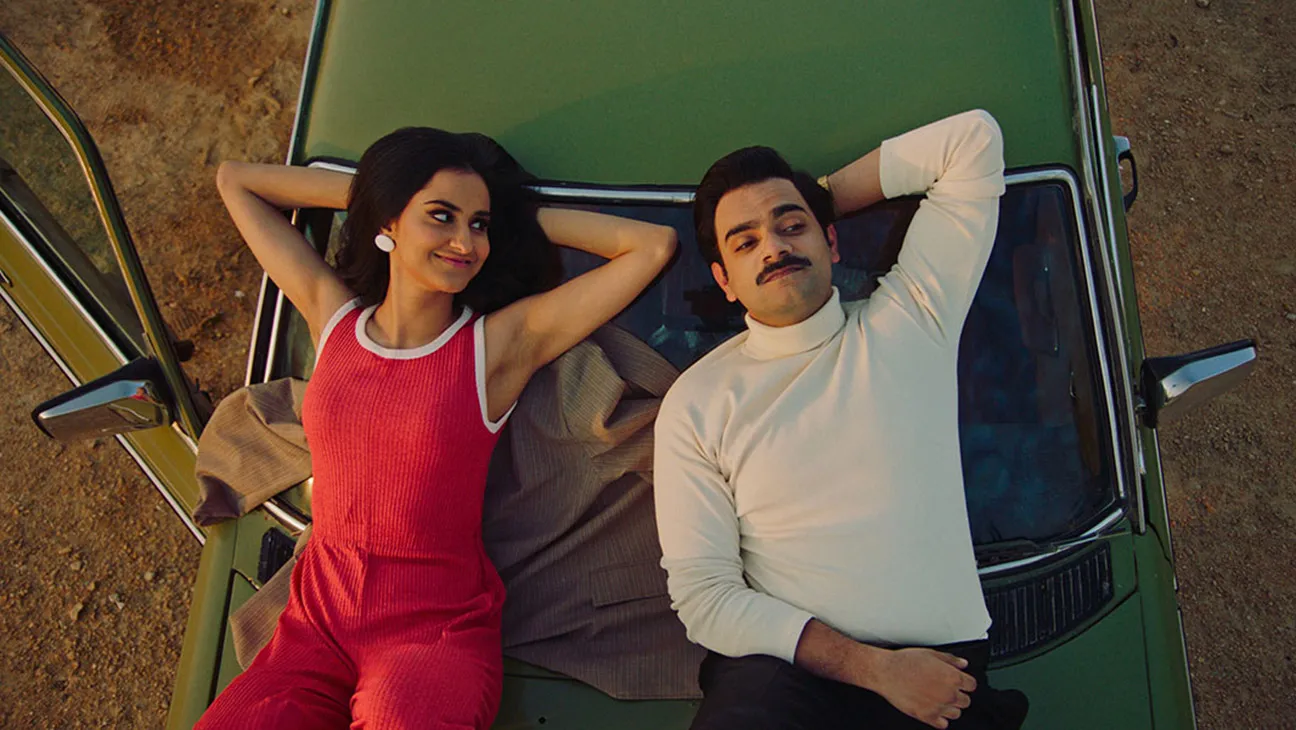“Queen of My Dreams” – Opening Night Film

Azra (Amrit Kaur) is a Pakistani lesbian in college studying to be an actor who tells her parents information on a “need to know” basis. She appreciates her heritage and shows her roommate the 1969 film “Aradhana,” boisterously singing along to the song “Mere Sapno Ki Rani” (the translated English title being “Queen of My Dreams”).
However, Azra has a complicated relationship with her mother that is tested when her father dies and she must travel back to Pakistan for his funeral. In Pakistan, women are not allowed at the burial, and Azra is frustrated with her mother’s adherence to traditional ways. Surely, her mother has never felt the way she feels.
“Queen of My Dreams” tests this idea by telling the story in several timelines: the first timeline follows Azra in 1999, but the film also shows the story of her mother, Miriam, firsthand. Miriam is played by the same actress, Amira Kaur, who shows versatility by playing two tonally different characters with similar desires. Now, it is 1969, and Miriam wants to find true love with a doctor who is moving to Canada. The problem is her mother, who is set on Miriam never leaving Pakistan. This portion of the film is dreamy like a classic film with stylish pops of color and more musical callbacks to “Mere Sapno Ki Rani.” “Queen of My Dreams” shines in these long flashbacks, and the film could have been set entirely in this time period and still felt complete.
The film does a good job of presenting the mother-daughter relationship between Azra and Miriam, often while they are not in the same room or time period. Amira Kaur is a visual cue that these two women are more similar than they appear, but Miriam in the present is just as important of a role. Nimra Bucha does an excellent job playing a strict mother caught between exasperation and love.
Overall, this film is a love letter to “Aradhana” and Pakistani culture, but anyone can connect to it through the relatable family at its center. “Queen of My Dreams” is a fun yet heartfelt film that shows the importance of family. Even though pleasing your parents can be difficult, they are an important part of growing older and becoming your own person. Listen to them, and you might have more in common than you think.
-Kaley Chun, Senior staff writer
“A Normal Family”

Everyone fights with their siblings, right? It’s almost a right of passage to not see eye-to-eye with the person you share your life with; it’s what a normal family does. But when does it go too far? And when do you stop being a “normal family?” Director Jin-ho breaks down the Korean family dynamics in “A Normal Family.”
This Korean adaptation of Herman Koch’s novel “The Dinner” centers around two brothers and their wealthy families as they grapple with moral dilemmas surrounding an incident involving their teen children. This film marks the fourth adaptation of Koch’s novel, the other three being Dutch, Italian, and American remakes.
The film shows an interesting juxtaposition between brothers Jae-wan (Sol Kyung-gu) and Jae-gyu (Jang Dong-Gun) who have different beliefs about the world. This indifference is fueled by their professions; Jae-wan is a lawyer who defends killers, and Jae-gyu is a doctor who treats their victims. Their moral disagreements spill over to the differences they have in raising their kids. Meanwhile, tensions rise among their wives and their kids and all of these issues occur over — you guessed it — dinner.
The relationships between the two families are the crux of the film. Everyone’s decisions affect their family as a whole, which makes the story entertaining and easy to follow. It is only when the narrative spins out of control that the film gets messy. This juicy drama loses its energy toward the end when the kids are revealed to be bluntly evil. Once the ambiguity is gone, so is the intrigue. The on-the-nose ending felt too dramatic, losing all its shock value. Despite its flaws, it was an entertaining film that hooks you in at the start, even if it loses you at the end.
-Kamiah Johnson, A&E Co-editor
“The Missing”

Memories can be a fickle thing. They fade and reappear over time and can define our futures. Director Carl Joseph Papa explores this in his film “The Missing.” Set in the Philippines, “The Missing” follows Eric (Carlo Aquino), a mouthless young man who is dealing with the death of his uncle while trying to start a relationship with his coworker. But when the alien that kidnapped him as a child comes back, he must try to reconcile his tragic past and make himself whole again.
The first thing that sticks out in this film is the unique animation. Papa used a mix of rotoscoping and 2D hand-drawn animation to achieve the almost real-looking figures. The world looked as though a filter was placed on top of it so that it still felt grounded but allowed them to take the creative liberties you can when using animation. The most creative scenes were the flashbacks to Eric’s childhood that were hand-drawn. This not only served the purpose of putting us in a young boy’s mind but also helped break up the monotony of the rotoscope animation.
The story itself is one that can be hard to watch. Using aliens as a metaphor for abuse felt too obvious at times, but it was also a buffer between us and the awful things Eric experienced. At times, Eric’s hallucinations of the aliens convoluted the story, making it hard to follow along. By the end of the film, the emotional catharsis is genuinely felt, and it ends on a hopeful note. Even though we might go through hard times, there is still light at the end of the tunnel.
-Kamiah Johnson, A&E Co-editor
“Ashima” – Closing Night Film

In rock climbing, the rock face you must climb is called a problem, and you solve it by climbing your way to the top. For most 13-year-olds, the hardest problems they have to solve are in math class. At 13, Ashima Shiraishi traveled to South Africa to climb a problem with a “V14” level of difficulty. In rock climbing, climbs are ranked on a “V scale”, and only one woman had ever climbed a “V14” before.
This is the subject of the documentary “Ashima.” The film follows a year in the life of Ashima Shiraishi as she mentally and physically prepares herself for a climb called “Golden Shadow” in South Africa. Before her trip, the audience is allowed a close look into her life in New York. The director, Kenji Tsukamoto, moved in with the family at this time to get a perspective on Ashima’s day-to-day life, and the result is that the audience feels like a part of the family, too.
At this time, Ashima lived with her parents in New York. Seeing her family dynamic was an interesting look at the sacrifices it takes when you dedicate all of your time to one goal. Ashima’s mother worked so that her father, Poppo, could be her rock climbing coach. He had no formal climbing experience, but as a retired Butoh dancer, he was able to teach her in a nonconventional way. He was shown to not go easy on his daughter just because she was young. Poppo pushed Ashima to greatness because he knew it was inside of her the entire time, but to audiences, his methods may seem harsh. To others, however, it makes sense: if you knew that your child was a prodigy, how could you let them quit?
In the documentary, Ashima said that rock climbing is a hobby that lends itself to obsession. The problem stays the same, but your approach is what changes. The documentary does a great job of showing her personality and fortitude, even though it glosses over the difficulty that comes with such a rigorous schedule. Ashima was young, but having so much pressure placed upon her made her stronger and more mature.
Today, Ashima Shiraishi is 23. The film “Ashima” has been a decade in the making, and it is wonderful that audiences get to finally see it. Director Kenji Tsukamoto admits that he had no rock climbing experience when he started this project, but he saw something inspiring in Ashima. Now, as the world witnesses this part of her story, they will hopefully follow her in the future as she continues to climb higher.
-Kaley Chun, Senior staff writer
Image courtesy of kbps








